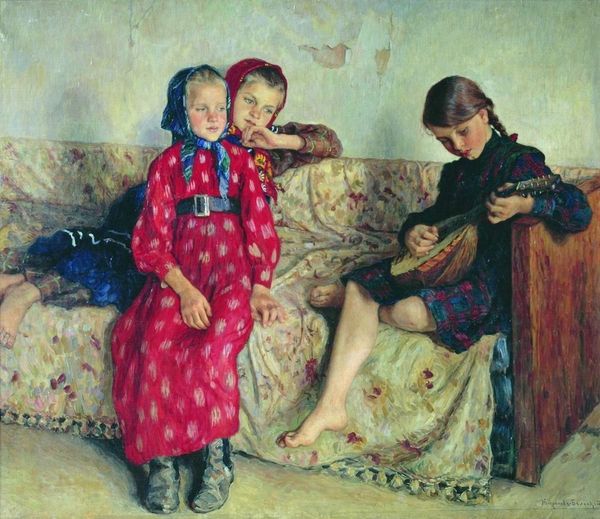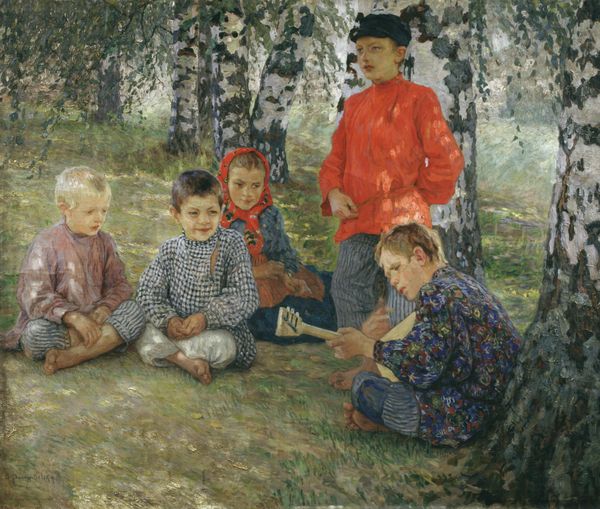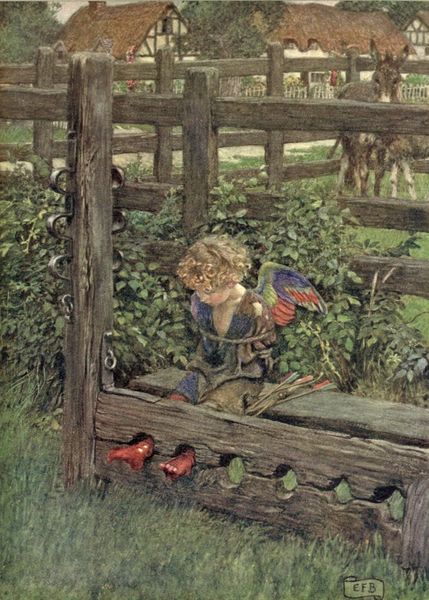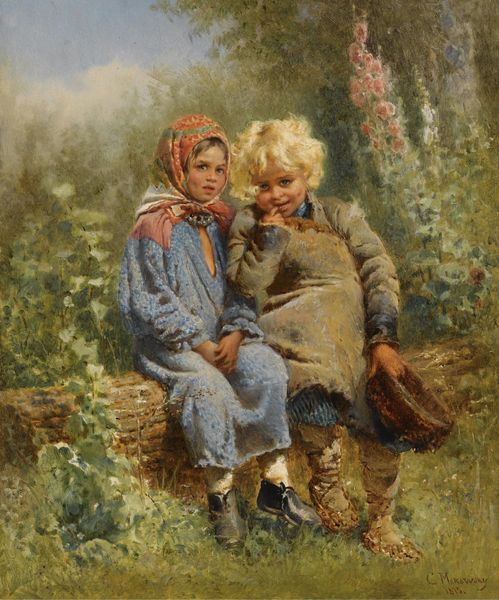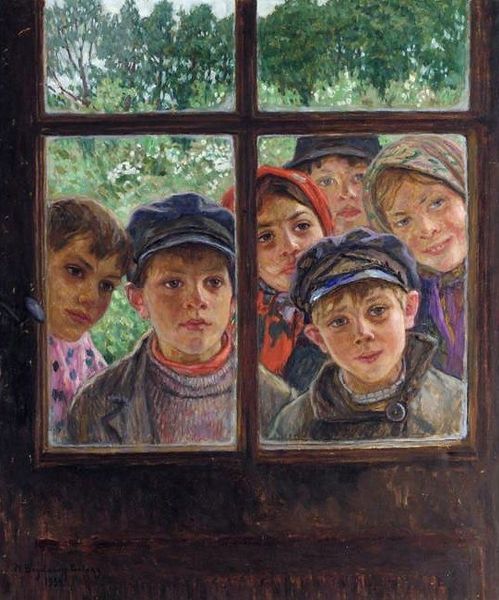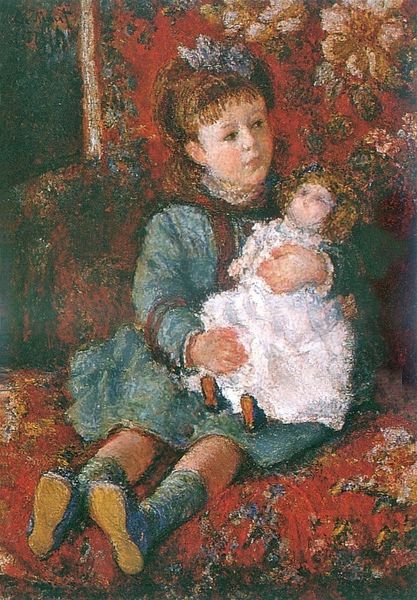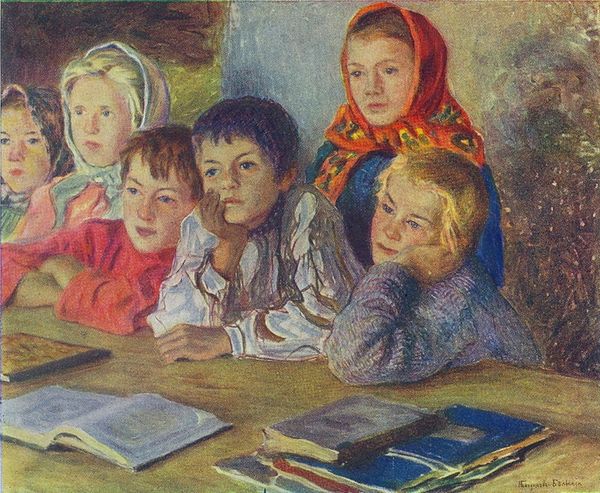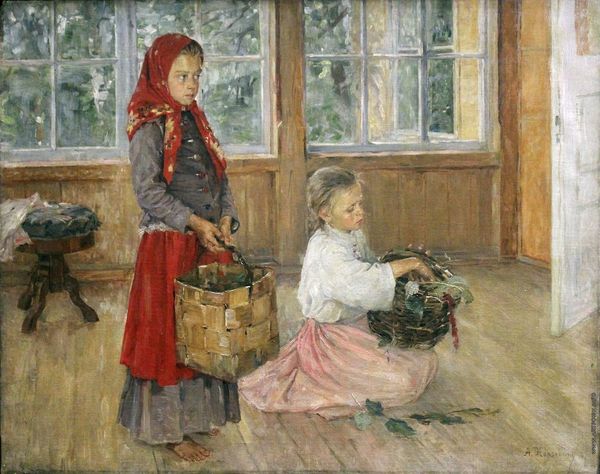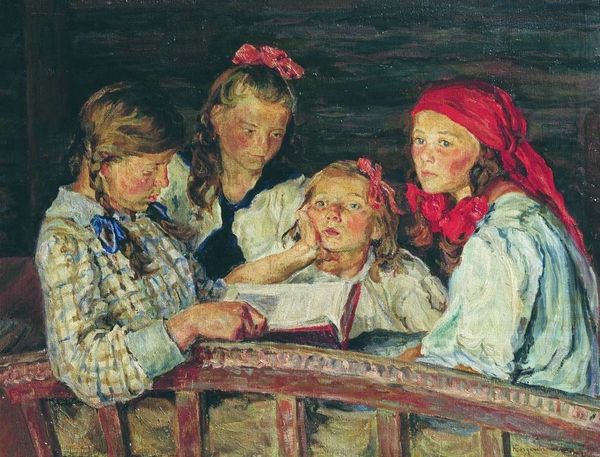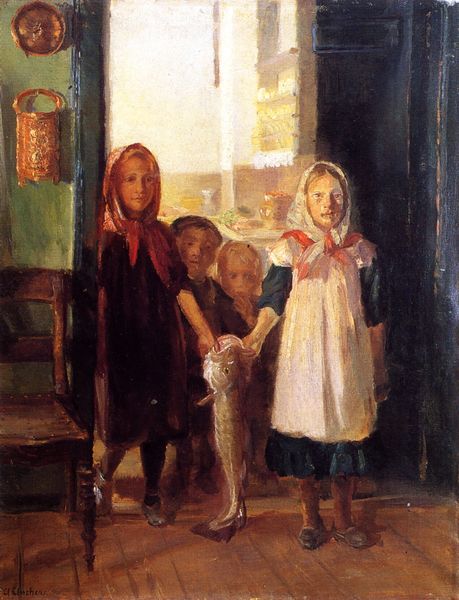
painting, oil-paint
#
portrait
#
gouache
#
painting
#
oil-paint
#
landscape
#
oil painting
#
russian-avant-garde
#
genre-painting
#
history-painting
#
realism
Copyright: Public domain
Curator: Nikolay Bogdanov-Belsky's "Misery," created in 1919 with oil paints, is a stark and emotive painting. Editor: My immediate impression is of palpable despair. The slumped figure, head in hands, seems overwhelmed, and the children beside him are bathed in a dim light that only amplifies the overall feeling of hopelessness. Curator: Absolutely. Bogdanov-Belsky painted this work during a tumultuous period in Russian history – right after World War I and in the midst of the Russian Revolution. Understanding the broader historical context—the famine, the societal upheaval—is essential to interpreting the painting's somber mood. Editor: And how do you see the societal disruption reflected specifically in the imagery he has used? Curator: Notice the expressions, particularly of the older child. There’s a preternatural knowing there, a premature loss of innocence in her eyes. It suggests a society where even children are forced to confront harsh realities and gender-specific issues such as female-headed homes in wartimes. It raises important questions about class, inequality, and social mobility, doesn’t it? The younger child perhaps being blissfully ignorant adds another element of heartbreak. Editor: You are right. The setting reinforces the hardship. They're outside a simple log cabin with light trying to escape through what must be small windows. What story might we tell from just the composition? Curator: The figures clustered together suggests their interdependence but also maybe their isolation, from institutions of political and societal power that often determine the narrative, like a public institution or social policies. This isolation is key, a condition exacerbated by both the physical landscape and political circumstances of the time. And consider the bare feet of the child. Even the presence of a pair of socks signifies an unattainable luxury. Editor: Thinking about the artwork in this light makes the personal experience seem universally resonant across space and time when poverty and conflict occur. Curator: It does. Through the faces and that somber composition, "Misery" forces us to confront uncomfortable realities, inviting critical conversations on what constitutes meaningful social justice and resilience in the face of societal trauma. Editor: For me, it’s a potent reminder that even amidst chaos and personal suffering, familial bonds endure as both a burden and a source of resilience. Curator: Precisely. It urges us to critically examine our social structures.
Comments
No comments
Be the first to comment and join the conversation on the ultimate creative platform.
